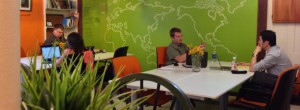No teaching for a year?!? It’s not as relaxing as you think.
by Dr. Tim Simpson, professor of mechanical engineering and industrial engineering
Oh, you’re on sabbatical? A whole year with no teaching and committee work; what are you going to do? I can’t tell you how many times I’ve had this conversation as I begin my year-long sabbatical this fall.
When I have this conversation with other faculty, they want to know which exotic country I’ll be in while writing my book, learning new research methods, or starting a new research trajectory – or all the above.
When the conversation is with non-academics, though, they are in complete disbelief that I am allowed to do this – and get paid for it! They can’t fathom why Penn State would allow this, and think that I must be sitting around eating bon-bons all day. How wrong they are!
So what is a sabbatical? Sabbatical derives from the Latin sabbaticus for ceasing, i.e., a break from work, and according to dictionary.com, a sabbatical is defined as:
any extended period of leave from one’s customary work, especially for rest, to acquire new skills or training, etc.
While I really like the “especially for rest” part of the dictionary.com definition, you will not find rest or break mentioned anywhere in Penn State’s definition of sabbatical:
Sabbatical Leave provides a leave of absence with pay for purposes of intensive study or research to increase future contribution to the University.
You will see how different Penn State’s definition of sabbatical is from perception. There is no mention of rest – it is “intensive” with the expectation that the experience will “increase future contributions to the University.” While “future contributions” is pretty open-ended, in my world of engineering, the unwritten expectation is that your sabbatical will prepare you to increase your research portfolio (in an existing or new area), which benefits Penn State’s R&D portfolio and leads to more revenue (through overhead and/or licensing of patents).
In essence, Penn State’s placing a bet – they pay you for a year to work hard to do something cool that will generate more in return to the University in the future. Faculty often do more into a sabbatical year than a regular academic year to maximize the returns on this rare opportunity, even though we don’t receive our full salary while on a year-long sabbatical.
So what am I doing on my sabbatical?
Short answer: everything that I wanted to get done since my last sabbatical seven years ago but haven’t had time to do.
 Longer answer: I’m immersing myself in entrepreneurial cross-training – learning how engineering design fits into the large entrepreneurial ecosystem locally (see photo at left) and nationally – and exploring new research into all the cool things that 3-D printing and additive manufacturing can do for engineering designers. At the same time, I continue to advise my students, make sure that all of my research projects stay on track, and engage in a few consulting projects with industry to validate the impact of my work.
Longer answer: I’m immersing myself in entrepreneurial cross-training – learning how engineering design fits into the large entrepreneurial ecosystem locally (see photo at left) and nationally – and exploring new research into all the cool things that 3-D printing and additive manufacturing can do for engineering designers. At the same time, I continue to advise my students, make sure that all of my research projects stay on track, and engage in a few consulting projects with industry to validate the impact of my work.
To learn more about my plans, I invite you to check out future posts and see what a sabbatical really looks like.
Tim Simpson is a professor in both mechanical engineering and industrial engineering. He holds affiliate appointments in the School of Engineering Design, Technology, and Professional Programs (SEDTAPP) and the College of Information Sciences & Technology. From 2007-2012, he served as director of the Learning Factory, and now he serves as co-Director of the Center for Innovative Materials Processing through Direct Digital Deposition (CIMP-3D), a DARPA-funded Manufacturing Demonstration Facility for Additive Manufacturing. This is his second sabbatical.
Read More



Follow Us!